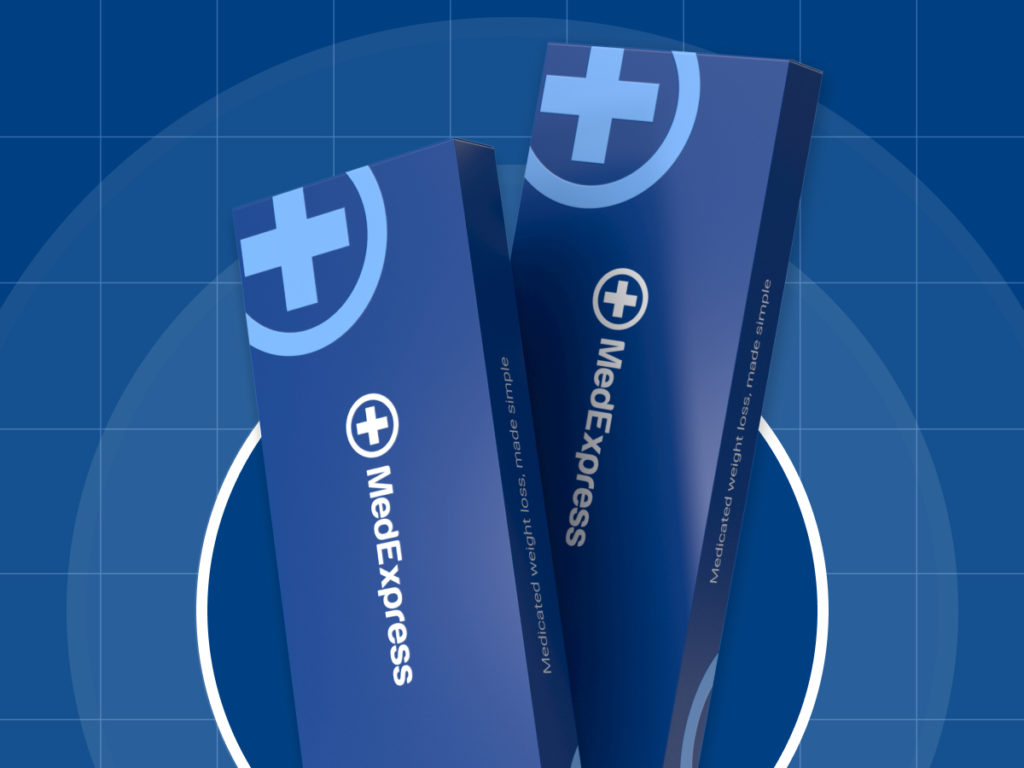Since semaglutide was approved for use in September 2023, the landscape for weight loss treatments in the UK was dramatically transformed, with thousands of people achieving significant results from GLP-1 treatments.
Now, with ever-advancing developments in the field, exciting news about future weight loss treatments is excelling at a rapid pace. Let’s explore some of the potential treatments set to change weight loss in the next few years.
First of all, how will they work?
There are four main players in the future of weight loss treatments: GLP-1, GIP, glucagon, and amylin.
- GLP-1 and GIP are both natural hormones in your gut that help control your appetite, blood sugar and cravings. Many weight loss treatments like semaglutide (Wegovy) and tirzepatide (Mounjaro) mimic these hormones, giving you the same feelings of fullness, even when you’re in a calorie deficit. They also help to reduce cravings, or ‘food noise’. When paired with a reduced-calorie diet and increased physical activity or exercise, using these medications can result in effective, healthy weight loss.
- Amylin is naturally secreted with insulin in the body after you eat, and helps to signal to your brain that you are full. It also slows stomach emptying. This means that by taking amylin, you can help prevent overeating, and feel satisfied for longer after meals.
- Glucagon promotes fat breakdown by increasing your energy expenditure, helping you to burn more calories from food. When combined with feelings of fullness provided by GLP-1 and GIP, it can be a powerful tool on your weight loss journey.
In the near future, we’ll see stronger doses of these treatments, and even new combined options for dual action — and, in some cases — triple action results. Here’s what we know so far, and when you can expect them.
Upcoming weight loss treatments
Wegovy 7.2 mg: High-dose treatment (expected late 2025)
The highest currently approved dose of Wegovy is 2.4 mg. But, new research has found that a dose as high as 7.2 mg is safe to use, with no significant increase in side effects. In the study, patients lost an average of 20.7% of their body weight, compared to 17.5% on 2.4 mg. [1]
It’s expected to become available this year, or early 2026.
High-strength oral semaglutide: The next weight loss tablet (expected late 2025)
Later this year, we may see higher doses of semaglutide (a GLP-1 treatment) available. Oral semaglutide is currently available under the brand name Rybelsus for the treatment of type 2 diabetes, and is only prescribed for weight loss off-label. Off-label use means it hasn’t been formally tested or approved for that specific use.
Higher strengths of oral semaglutide (25 mg and 50 mg) were studied in the OASIS clinical trial , and showed promising results — an average of 15.1% weight loss* [2].
* Oral semaglutide, 50 mg, over 68 weeks.
Orforglipron: Once-daily pill (expected in 2026)
Orforglipron is a new type of GLP-1 medicine which is taken as a once-daily pill instead of an injection.
It works like other GLP-1 treatments by helping the body release insulin when blood sugar is high, lowering glucagon, slowing how quickly food leaves the stomach, and reducing appetite.
Orforglipron provides steady effects with just one pill a day. Unlike other oral GLP-1 options, it can be taken with or without food and doesn’t require fasting.
In the ATTAIN-1 clinical trial, people with obesity using Orforglipron lost -11.2% of their body weight on average over 72 weeks. [3]
Orforglipron shows meaningful weight loss results, but not quite as much as the strongest injectable treatments. While injections like Mounjaro and Wegovy can lead to greater weight loss, orforglipron offers the major benefit of convenience as a simple daily pill. This will make it an appealing option for people who want the benefits of GLP-1 therapy without injections.
CagriSema: Combined treatment (expected mid-2027)
CagriSema is a once-weekly injection that combines two medicines, semaglutide and cagrilintide. Semaglutide mimics GLP-1 and is the active ingredient in Wegovy and Rybelsus, which helps the body release insulin when blood sugar is high, lowers the release of glucagon (a hormone that raises blood sugar), slows how quickly food leaves the stomach, and reduces hunger. Cagrilintide mimics the natural hormone called amylin. It also helps you feel fuller, slows stomach emptying, and lowers glucagon after meals.
By working together, these two medicines make you feel satisfied with less food and help lower calorie intake more effectively than either medicine on its own.
In the REDEFINE-1 clinical trial, people with obesity using CagriSema lost -20.4% of their body weight on average over 68 weeks. Remarkably, 40.4% of people in this trial achieved a weight loss of 25% or more. [4]
The most common side effects are, like other GLP-1 medications, predominantly digestive, and include nausea, vomiting, and diarrhoea. These are usually mild to moderate and most often occur at the start of treatment or when increasing dose.
Retatrutide: Triple-action treatment (expected 2027)
Retatrutide is a record-breaking new weight loss treatment, with participants in clinical trials losing an average of 24.2% of their body weight in 48 weeks [5]. That’s likely down to its triple-action formula, which combines GLP-1, GIP, and glucagon receptors — previously unheard of in other weight loss treatments.
MariTide: Long-lasting GLP-1 and GIP treatment (expected 2028-29)
MariTide is exciting for a number of reasons. The first is that it’s a monthly subcutaneous injection, making it a much more practical option than daily and weekly doses. The second is that initial trials indicate that the results are consistent — with other GLP-1s, people tend to lose less weight as time goes on. With MariTide, participants have been shown to lose an average of 20% body weight over 52 weeks [6], with steady weight loss throughout.
Survodutide: Glucagon+GLP-1 receptor dual agonist (expected ‘late 2020s’)
Another dual-action treatment, Survodutide activates glucagon receptors as well as GLP-1 receptors.
Glucagon receptors help to regulate your metabolism, which could provide additional calorie-burning benefits alongside the appetite suppression effects of GLP-1s, helping you lose more weight. Initial studies show weight loss of up to 14.9% in 46 weeks. [7]
Amycretin: GLP-1 combined with amylin (expected 2030)
Amycretin combines the actions of GLP-1 with amylin — a hormone with similar effects, including slower digestion and regulated blood sugar. It comes from the same manufacturer as Wegovy, and shows promising early trial results, with participants losing up to 24.3% of their body weight in 36 weeks. [8]
Looking for available weight loss treatments? Learn more about your options and eligibility, and find out which is right for you today at MedExpress.
References
- Wharton S, Freitas P, Jøran Hjelmesæth, Kabisch M, Kandler K, Ildiko Lingvay, et al. Once-weekly semaglutide 7·2 mg in adults with obesity (STEP UP): a randomised, controlled, phase 3b trial. The Lancet Diabetes & Endocrinology [Internet]. 2025 Sep 1 [cited 2025 Sep 23]; Available from: https://www.thelancet.com/journals/landia/article/PIIS2213-8587(25)00226-8/abstract
- Knop FK, et al; OASIS 1 Investigators. Oral semaglutide 50 mg taken once per day in adults with overweight or obesity (OASIS 1): a randomised, double-blind, placebo-controlled, phase 3 trial. Lancet. 2023 Aug 26;402(10403):705-719. doi: 10.1016/S0140-6736(23)01185-6. Epub 2023 Jun 26. PMID: 37385278.
- Wharton S, et al; ATTAIN-1 Trial Investigators. Orforglipron, an Oral Small-Molecule GLP-1 Receptor Agonist for Obesity Treatment. N Engl J Med. 2025 Sep 16. doi: 10.1056/NEJMoa2511774. Epub ahead of print. PMID: 40960239.
- Garvey WT, et al; REDEFINE 1 Study Group. Coadministered Cagrilintide and Semaglutide in Adults with Overweight or Obesity. N Engl J Med. 2025 Aug 14;393(7):635-647. doi: 10.1056/NEJMoa2502081. Epub 2025 Jun 22. PMID: 40544433.
- Jastreboff AM, et al; Retatrutide Phase 2 Obesity Trial Investigators. Triple-Hormone-Receptor Agonist Retatrutide for Obesity – A Phase 2 Trial. N Engl J Med. 2023 Aug 10;389(6):514-526. doi: 10.1056/NEJMoa2301972. Epub 2023 Jun 26. PMID: 37366315.
- Jastreboff AM, et al; MariTide Phase 2 Obesity Trial Investigators. Once-Monthly Maridebart Cafraglutide for the Treatment of Obesity – A Phase 2 Trial. N Engl J Med. 2025 Sep 4;393(9):843-857. doi: 10.1056/NEJMoa2504214. Epub 2025 Jun 23. PMID: 40549887.
- Kosiborod MN, et al; SYNCHRONIZE–CVOT Trial Committees and Investigators. Survodutide for the Treatment of Obesity: Rationale and Design of the SYNCHRONIZE Cardiovascular Outcomes Trial. JACC Heart Fail. 2024 Dec;12(12):2101-2109. doi: 10.1016/j.jchf.2024.09.004. Epub 2024 Oct 23. PMID: 39453356.
- Dahl K, et al. Amycretin, a novel, unimolecular GLP-1 and amylin receptor agonist administered subcutaneously: results from a phase 1b/2a randomised controlled study. Lancet. 2025 Jul 12;406(10499):149-162. doi: 10.1016/S0140-6736(25)01185-7. Epub 2025 Jun 20. PMID: 40550231.



